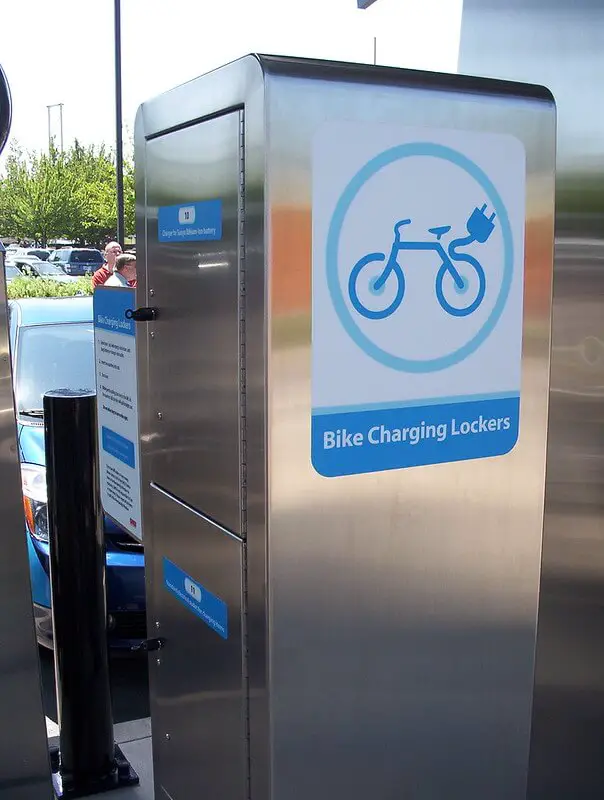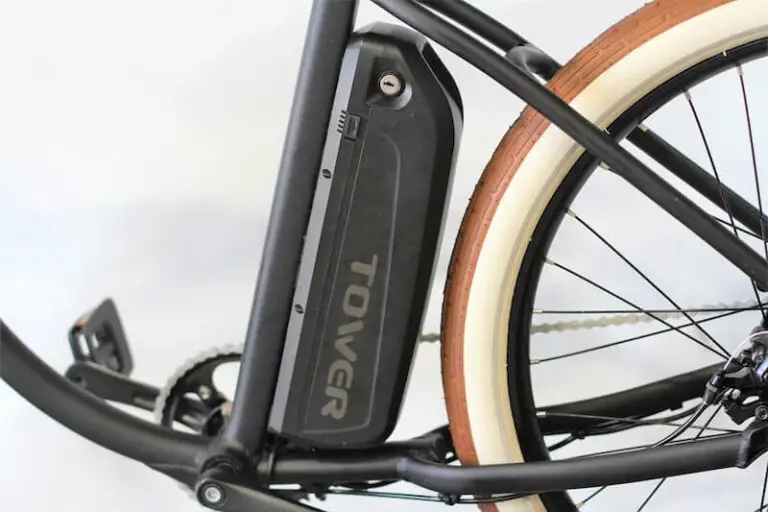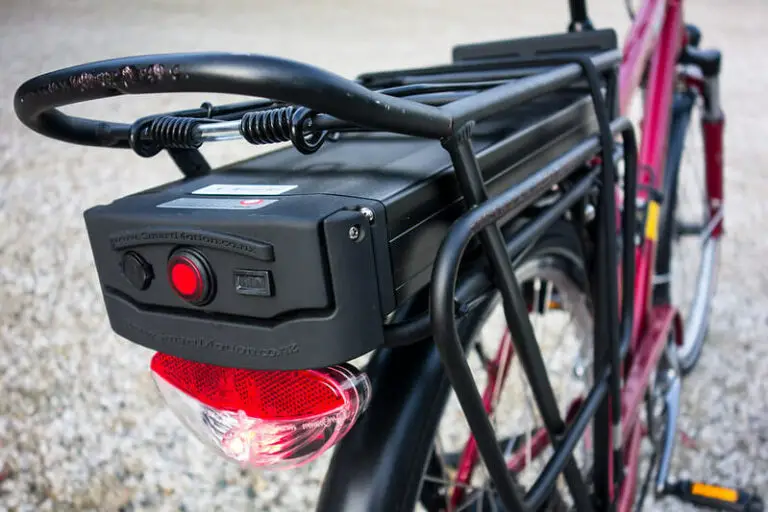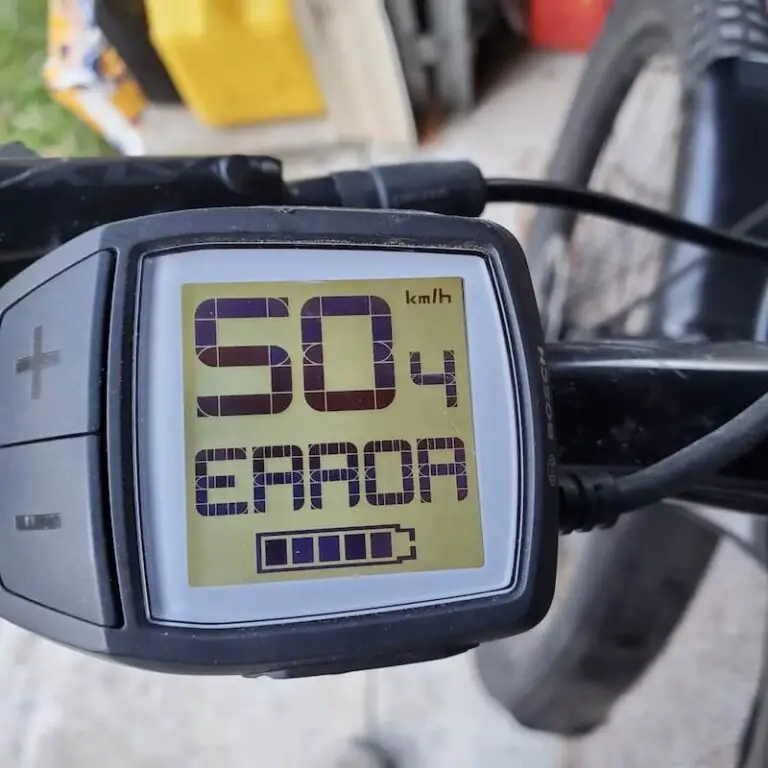When is the best time to charge your electric bike (battery)? Explained
In addition to quality differences between different types of batteries and the different bike brands, treating your electric bike battery correctly is the most important factor in extending your E-bike’s battery life.
The most frequently asked question I get almost daily is: “When should I charge the bike battery?” I did a lot of research to find this out for you.
The rule of thumb for charging your electric bike battery: It is best to charge the battery of your electric bike when it is charged between 40% and 70%.
The three most important tips for charging your e-bike battery:
1. Avoid running the battery completely empty at all times.
Charging after every short ride is not necessary, but it also does no harm to modern e-bikes. The most important thing is to prevent the battery from being completely empty, to 0%. For example, immediately reconnect the battery of your electric bike to the charger after a long bike ride.
2. Charge the battery even when you don’t use your E-bike.
Charge the battery regularly if you do not use your electric bike for a long time. Especially in the winter months. Deep discharge is the main cause of defective batteries in electric bikes.
3. Always use the original charger.
This is specifically tailored to your battery. This also prevents you from giving too much power to your battery and damaging it.
Read the manual for charging your E-bike battery.
The above answer is quite general, but applicable to any electric bike.
Perhaps you are looking for a more specific answer? Opinions on when is the best time to charge your bike battery vary. I think that’s because many different types of batteries have come on the market over the years, all of which have their own instructions for correct use.
My advice is: follow the instructions that are described in the manual of your e-bike. Then you give the best care to your battery.
Fortunately E-bike batteries are getting smarter
Due to continuous innovation in battery systems, bike batteries are getting smarter.
Battery management system helps with charging and discharging
For example, with the help of built-in control technology, every e-bike battery now has a Battery Management System (BMS) [wikipedia] that automatically does a lot of work to keep the battery in good condition.
This BMS system ensures, for example, that your bike battery stops charging when the battery pack is almost full, to prevent overcharging. Conversely, the BMS also prevents deep discharge by not letting the battery run completely empty.
Chemical composition of batteries also improved
In addition to the smarter built-in technology, we see that the improved chemical composition of the batteries also promotes charging. For example, modern Li-ion or much easier to use than older nickel-cadmium (NiCd), or nickel-metal hydride (NiMH) models.
This is because Li-ion does not suffer from memory effects. Short irregular charging patterns significantly deteriorated the maximum capacity of NiCd batteries.
Always use the original charger for your e-bike battery.
In addition to the BMS on the battery, also the quality of the charger important. The charger supplied with the battery is always matched to that battery. And that is for a reason: this charger provides the correct voltage and current that suits the battery.
Prevent a too high current on your battery.
That is why it is strongly recommended not to use a charger other than the one that comes with the battery. Another charger can supply too much current, causing the bike battery to charge too quickly and become too hot, which reduces the lifespan of the battery.
There are also Travel chargers available, which can be plugged into the car via the cigarette lighter, for example. The following also applies: make sure that this charger fits the battery.
Specific questions about charging the bike battery:
I often get asked the following questions regarding the charging of bike batteries. Rather than answer every email, I’ll discuss them here.
How long does it take to charge an electric bike battery?
Another factor: the standard charger charges the bike battery faster than, for example, a travel charger. With a travel charger, it can take twice as long.
Do I have to charge my electric bike battery after every ride?
Do I have to fully charge the battery of a new e-bike before use?
The idea that devices must first be fully charged before being used dates back to the nickel-cadmium (NiCd) or nickel-metal hydride (NiMH) era. Lithium-ion batteries do not lose their maximum capacity if they are not fully charged first.
Does my e-bike have to be constantly (and fully) charged when I’m not using it?
With Li-ion batteries and the even more modern brother: the lithium-iron-phosphate battery (LFP or LiFePo4) with a modern BMS, this can’t hurt. It is therefore important that there is a good BMS in the battery system that ensures that there is no overcharging.
However, it is certainly not necessary to always leave the battery in the charger. A disadvantage is also that it costs more power. The charger in the socket continuously loses energy in the form of heat.
How long can I leave my electric bike in the charger?
Only when some voltage is lost from the battery it gets a little bit recharged. This keeps the battery permanently at 100% before use. Although in reality, it will be more like 90% because a safety mechanism to prevent overcharging is used.
If I do not use the E-bike battery for a longer period of time, do I still have to charge it?
The most well-known disadvantage of lithium-ion batteries (and to a lesser extent the newer lithium-iron-phosphate battery) is that they self-discharge. That means the battery will drain slowly even if it is not being used at all. This in itself is not a big problem, except that it enforces charge cycles and thus actually already captures the maximum battery life.
Prevent deep discharges at all times!
A deeply discharged E-bike battery is a total loss and must be replaced with a new one. Or, the battery must be overhauled by replacing the battery cells in the battery pack. Both options cost hundreds of dollars. A shame, because it can be prevented.
This is how you prevent deep discharge of your E-bike battery:
Never leave the battery unused for more than a few weeks (a month at most) without recharging. Exactly how often you have to connect the bike battery to the charger depends on the battery and its self-discharge rate.
This is also influenced by the temperature. In any case, count on a few weeks. So charge the battery to 60% every few weeks.
Watch the battery temperature
Use a protective cover to keep the battery temperature stable. There are special protective covers on the market that fit exactly around the battery of your electric bike. The purpose of these covers is to provide insulation and thus maintain the temperature of the battery.
If the E-bike battery becomes too hot, for example in the sun, or too cold in the shed in winter, the performance such as the range decreases noticeably. A protective cover limits temperature fluctuations and thus ensures that the battery supplies energy more stable.
Pay attention to the ambient temperature
When charging and storing your electric bike battery, also pay attention to the ambient temperature . For example, do not put the battery in front of the window in the sun. And don’t leave the battery in a shed in the winter when it’s freezing cold. Room temperature, or slightly cooler (50°F – 77°F / 10ºC – 25ºC) is the ideal temperature, where the battery charges the fastest.
Conclusion: This is the best way to charge your battery and your e-bike will last longer.
- When to charge: when it is still between 40%-70% full. But with many new batteries this does not matter.
- Don’t Overcharge: (BMS makes sure that doesn’t happen). Continuous charging is not necessary, but it also does no harm.
- Not completely discharged: (BMS ensures that does not happen in the short term). But in the longer term, an empty lithium battery must always be recharged, even if it is not actively used to prevent deep discharge. Do this, otherwise, the battery will die!
- Use the original supplied charger.
- If necessary, use a protective cover to keep the battery temperature stable
There you have it, now you know everything there is to know about your electric bike’s battery and how to charge it.







